
A majority of individuals (84%) are confident their medical records are safe from unauthorized viewing, but have concerns (66%) when health information is electronically exchanged. More individuals are now confident their records are safe from…
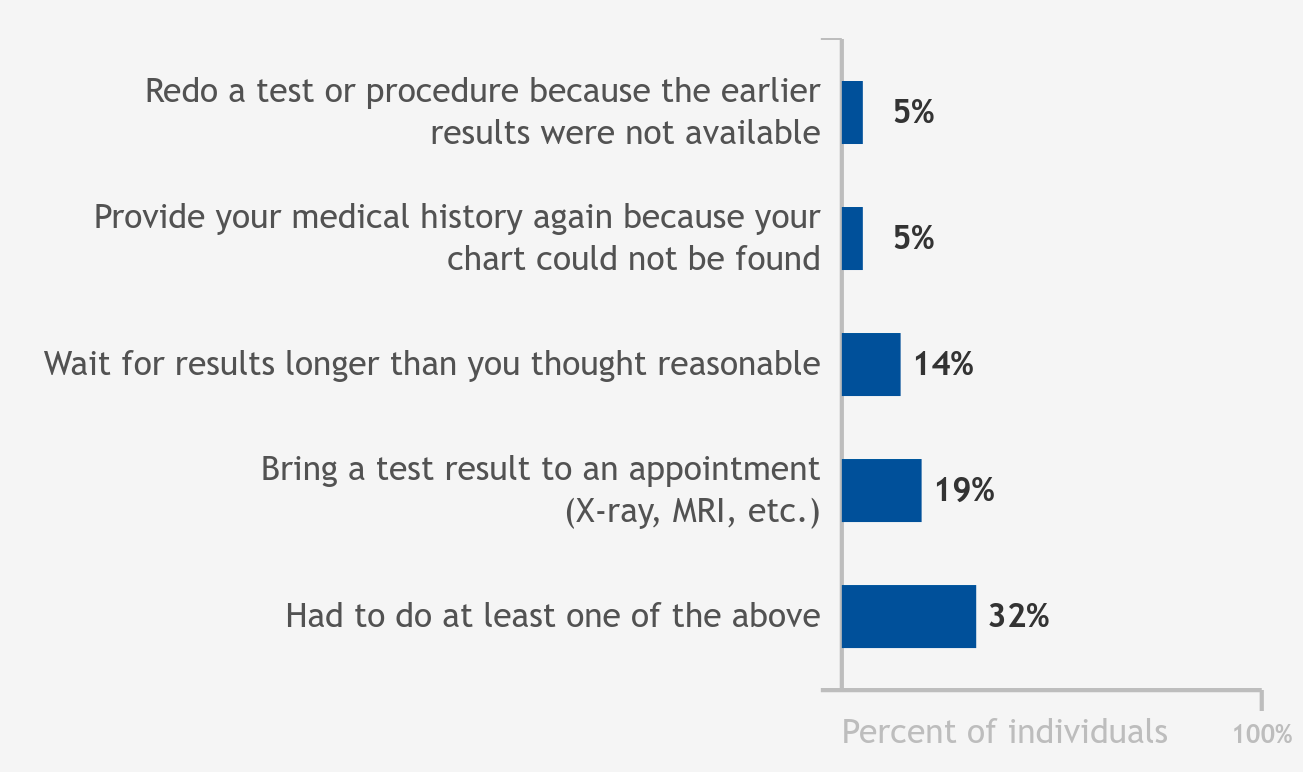
Eight-one percent of individuals went to a health care provider at least once within the past year. Overall, 32 percent of individuals who went to a doctor in the past 12 months reported experiencing a gap in information exchange. About 1 in 20…
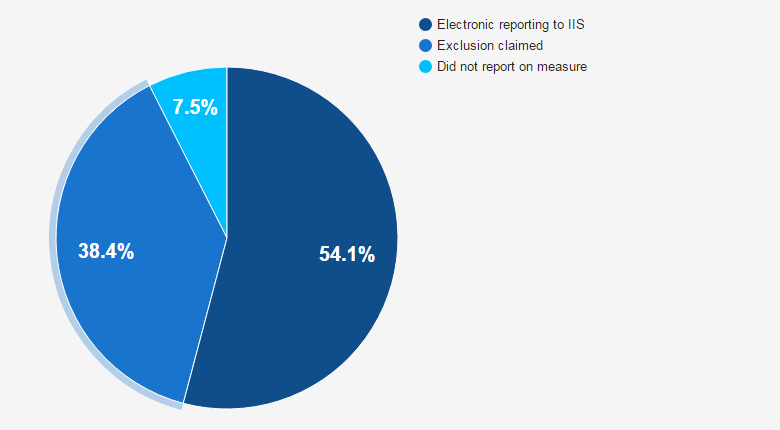
In 2015, 54 percent of eligible professionals (EP) participating in Stage 2 of the Medicare EHR Incentive Program and 44 percent of professionals participating in modified stage 2 electronically reported immunizations to local registries.
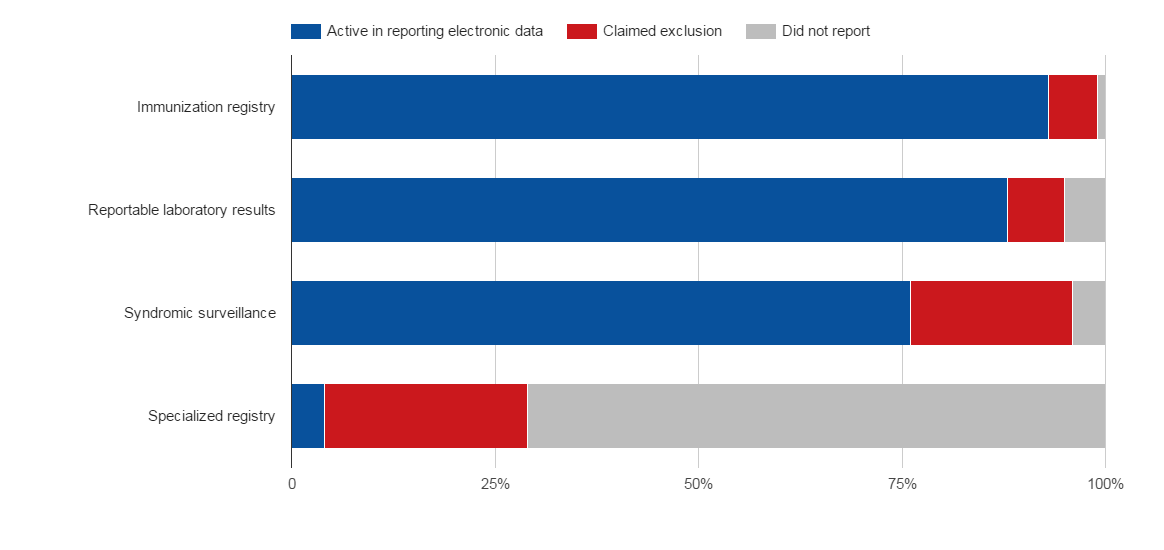
In 2015, 4,043 eligible and Critical Access hospitals (EH) reported to the Medicare EHR Incentive Program. 90 percent of hospitals attested to stage 2 of meaningful use. 93 percent of all hospitals reported active engagement with an immunization registry…
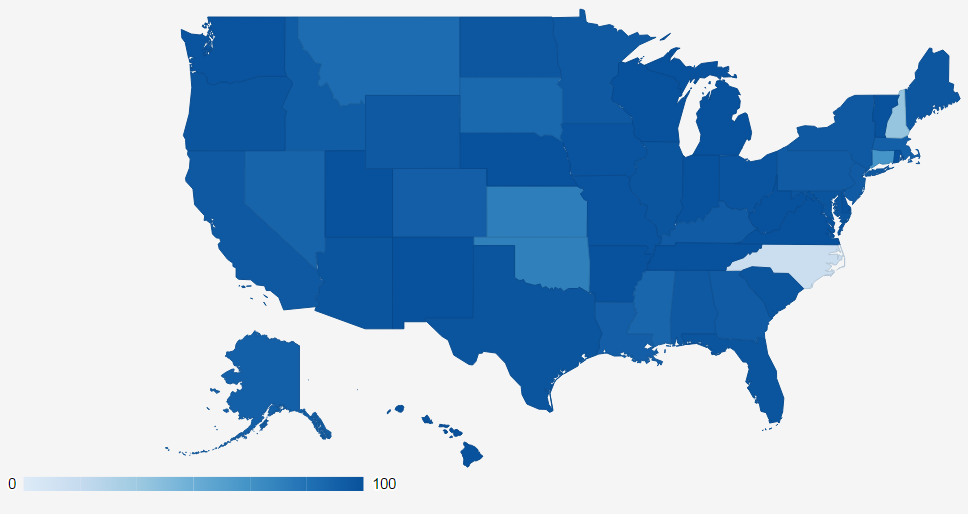
In 2015, eligible and Critical Access hospitals were required to report on active engagement with a public health agency to submit four possible types of electronic public health data: (1) immunizations; (2) reportable laboratory results; (3) specialized…
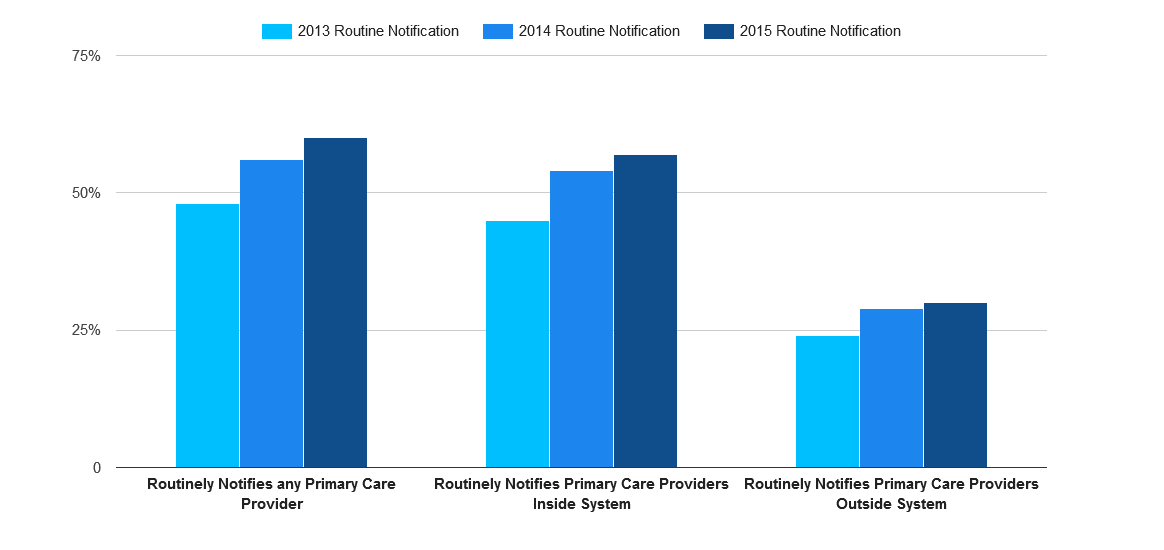
Three in five non-federal acute care hospitals routinely electronically notify a patient's primary care provider upon his entry to the hospital's emergency department - an over 50 percent increase since 2012. Fifty-seven percent of all…
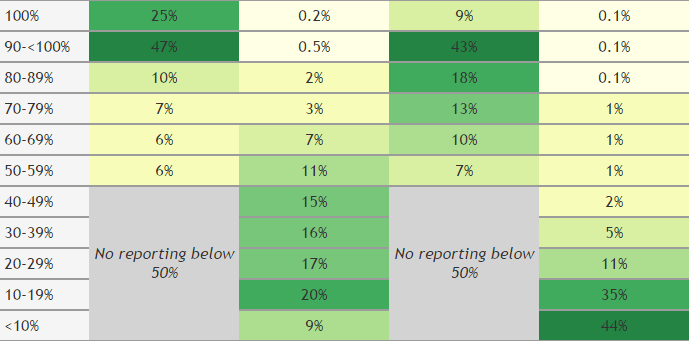
The data presented here reflect eligible hospital, Critical Access hospital, and eligible professional reporting on electronic exchange measures as defined for 2014, and indicate that significant progress must be made to reach a patient-centered, fully…

Electronic report to Immunization Information Services (IIS) was an optional measure for participants at stage 1 of the Medicare EHR Incentive Program, and a required measure for stage 2. Since 2011, electronic IIS reporting among eligible professionals…
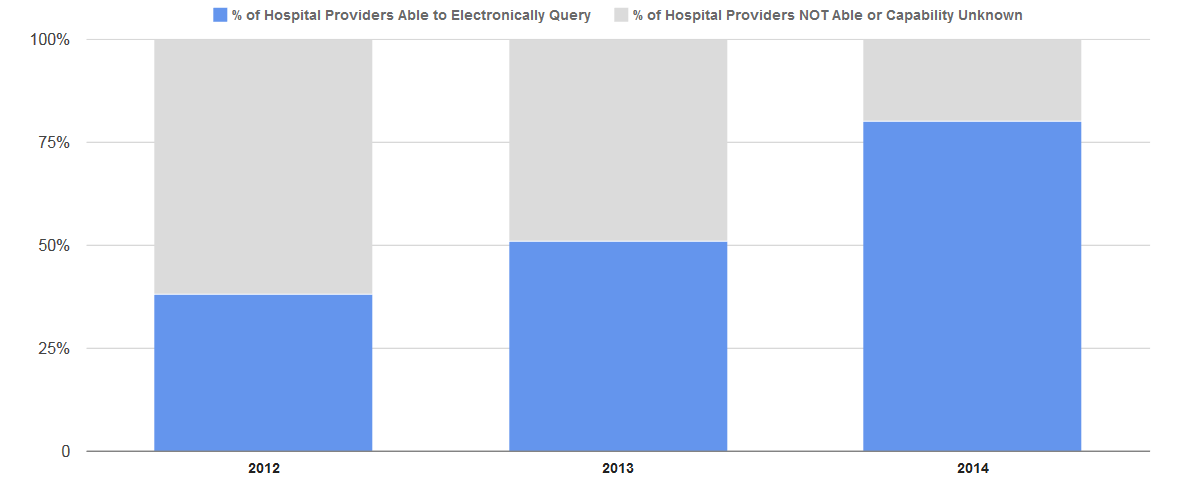
As of 2014, 80 percent of non-federal acute care hospitals have the capability to electronically query patient health information from external sources, an over 30 percentage point increase from 2013. In 2014, 48 percent of hospitals routinely queried…
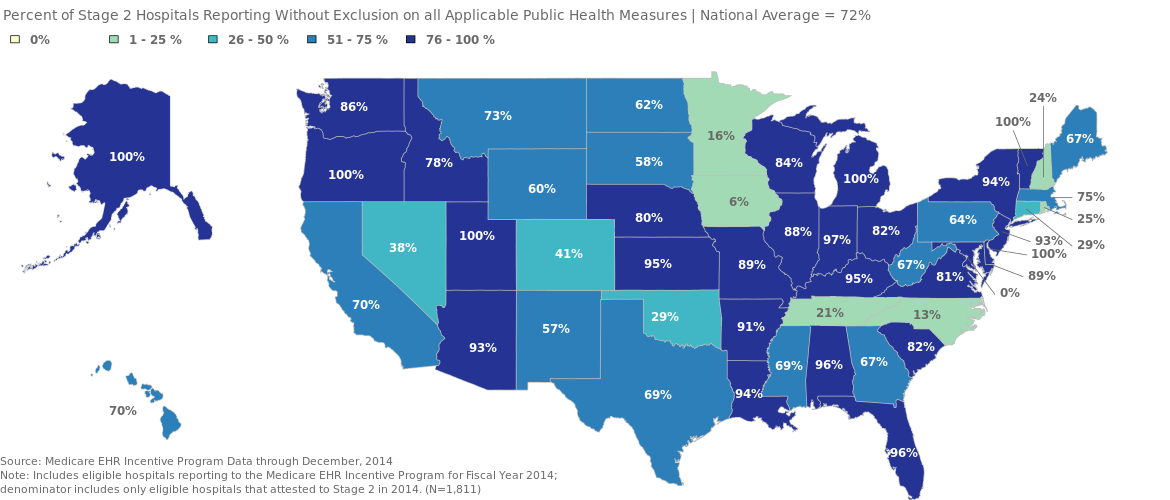
The CMS EHR Incentive Program provides incentive payments for eligible hospitals to adopt and meaningfully use certified health IT. Among the requirements to receive an incentive payment, participating hospitals must report on public health measures.…
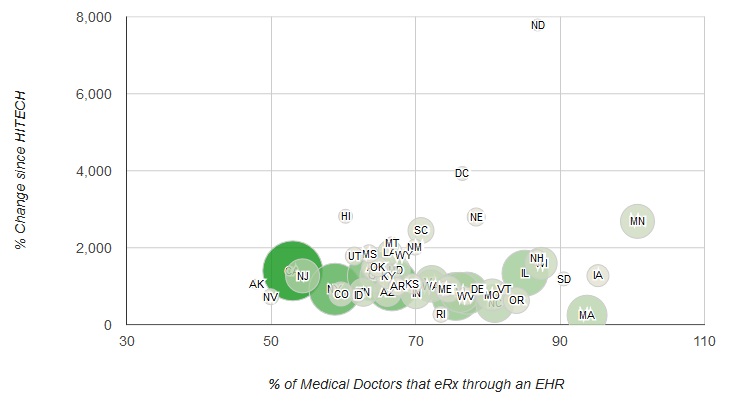
In December 2008, less than two months before the passage of the Health Information Technology for Economic and Clinical Health (HITECH) Act, fewer than 7% of all U.S. medical doctors electronically prescribed (e-prescribe) patient medications through an…
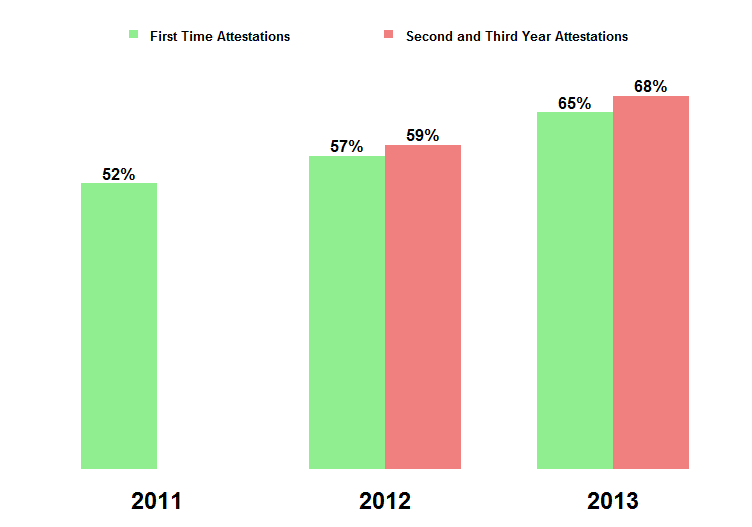
Approximately 7 out of 10 primary care physicians eligible for the Medicare EHR Incentive Program selected the Immunization Meaningful Use Menu measure without exclusion in 2013. 65 percent of 2013 first time attesters selected this measure without…
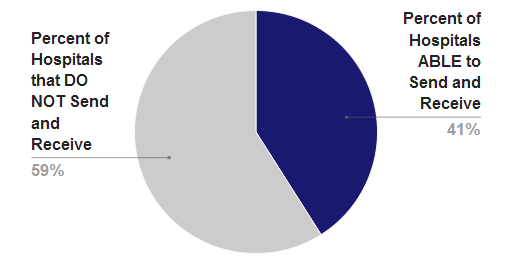
Approximately 4 in 10 hospitals (41%) report that providers at the hospital are able to send and receive secure electronic messages containing patient health information (e.g., medications) to and from sources outside of the organization or hospital…
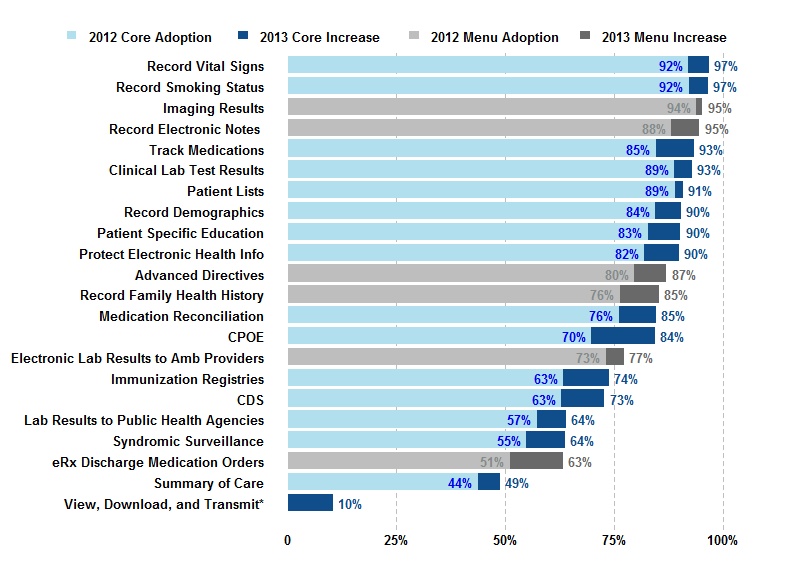
Stage Two of the Meaningful Use program consists of 22 core and menu objectives. A subset of hospitals will be eligible to begin attesting to these Stage 2 objectives in 2014. In 2013, adoption rates for 20 of these objectives were over 60 percent.…

Stage 1 of the Meaningful Use program consists of 24 core and menu objectives. Hospitals began attesting to Stage 1 in 2011.
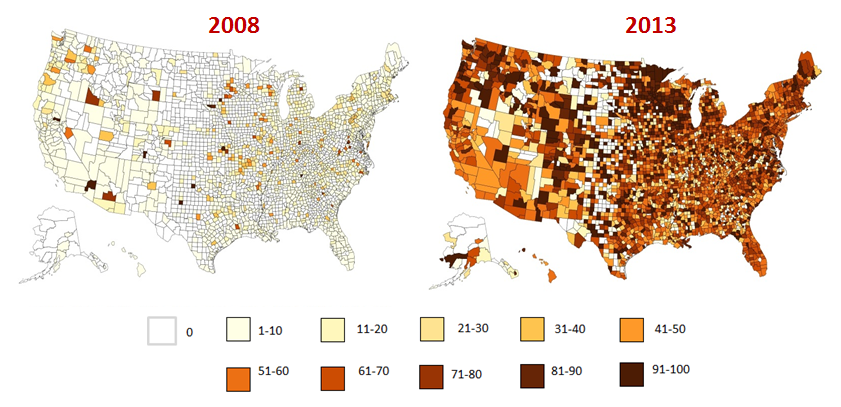
In the past five years, physician Electronic Health Record (EHR) adoption has surged, reaching all corners of the country. The percentage of physicians e-Prescribing via an EHR has accelerated from 7 percent in December 2008 to 66 percent as of December…

Hospitals that began the Meaningful Use program in 2011 were 6 percentage points more likely to select at least one public health measure without an exclusion by their third year of participation (2013), compared to their first year of participation (…

Approximately 3 in 10 individuals (32%) reported that clinical laboratories had provided them direct access to test results, either in paper or electronic format, during the past 12 months in 2012.

